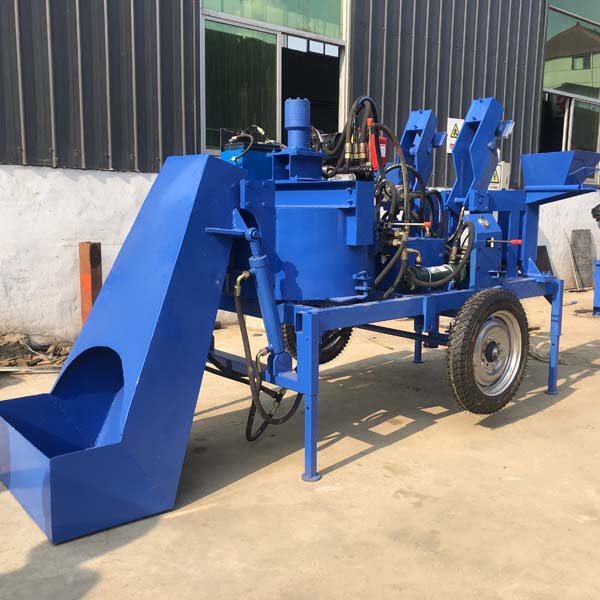
Image source Aiweibrickmachine
Recycling and Circular Economy Practices in Concrete Block Production
The construction industry is a significant contributor to global waste generation and resource consumption. In response to the growing environmental concerns, concrete block production has been evolving to embrace recycling and circular economy practices. This comprehensive exploration delves into the role of recycling and circular economy principles in concrete block production and their impact on sustainability and environmental stewardship.
Section 1: Understanding Recycling and Circular Economy
1.1 What Is the Circular Economy?
The circular economy is an economic system that aims to minimize waste and make the most of resources by extending the life cycle of products and materials through strategies like recycling, reusing, and refurbishing.
1.2 The Importance of Recycling
Recycling plays a crucial role in reducing the environmental impact of various industries, including construction, by diverting waste from landfills and conserving valuable resources.
Section 2: Traditional Practices in Concrete Block Production
2.1 Conventional Concrete Block Production
Traditional concrete block production often involves resource-intensive practices, such as extracting virgin aggregates, consuming significant energy, and generating substantial waste.
2.2 Environmental Challenges
The conventional approach to concrete block production poses environmental challenges, including depletion of natural resources and carbon emissions.
Section 3: Recycling in Concrete Block Production
3.1 Recycled Aggregates
Using recycled aggregates in concrete block production reduces the demand for virgin materials, lessening the environmental footprint.
3.2 Recycled Water
Treating and reusing wastewater in the production process minimizes water consumption and reduces pollution.
3.3 Scrap Concrete
Recycling scrap or damaged concrete blocks back into the production cycle reduces waste and conserves resources.
Section 4: Circular Economy Principles
4.1 Product Design
Designing concrete blocks for disassembly and reuse ensures that materials remain in circulation for longer periods.
4.2 Extended Product Life
Creating durable concrete blocks that resist wear and tear prolongs their useful life.
4.3 Reverse Logistics
Implementing systems for retrieving and refurbishing concrete blocks from construction sites promotes circularity.
Section 5: Sustainable Sourcing
5.1 Responsible Material Sourcing
Sourcing materials locally and responsibly, while considering their life cycle impact, aligns with circular economy principles.
5.2 Sustainable Binders
Exploring alternative, eco-friendly binders like geopolymers reduces the carbon footprint of concrete block production.
Section 6: Benefits of Recycling and Circular Economy Practices
6.1 Waste Reduction
Recycling and circular economy practices in concrete block production significantly reduce waste generation.
6.2 Resource Conservation
By reusing materials and extending product life, these practices conserve valuable resources.
6.3 Lower Carbon Footprint
The reduced demand for virgin materials and energy-intensive production processes results in a lower carbon footprint.
Section 7: Challenges and Solutions
7.1 Quality Control
Maintaining consistent quality when using recycled materials can be a challenge, but it is essential for reliable construction.
7.2 Market Demand
Stimulating demand for recycled concrete blocks may require market incentives and consumer awareness.
7.3 Regulatory Compliance
Adhering to environmental regulations and standards is crucial for responsible recycling practices.
Section 8: Case Studies
8.1 The Netherlands’ Concrete Recycling Initiative
The Dutch concrete recycling initiative showcases the successful integration of circular economy principles in the construction industry.
8.2 Eco-Friendly Binders
Innovative binders like calcium sulfoaluminate cement demonstrate the potential for reducing the carbon footprint in concrete block production.
Section 9: Future Outlook
9.1 Advancements in Recycling Technologies
Emerging technologies, such as advanced sorting and recycling techniques, offer promising solutions for concrete block production.
9.2 Circular Economy Regulations
Governments and organizations worldwide are developing regulations and standards to promote circular economy practices in construction.
Section 10: Conclusion
Recycling and circular economy practices are not just trends in concrete block production; they are essential strategies for mitigating the industry’s environmental impact and addressing the challenges of resource scarcity and waste generation. By embracing these principles, concrete block producers contribute to a more sustainable and responsible construction sector. The future of concrete block production lies in its ability to innovate, adapt, and lead the way towards a circular economy, where materials are endlessly recycled, and waste becomes a thing of the past.
